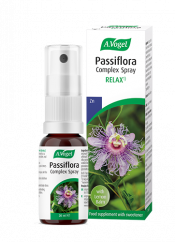What are the three stages of fight-or-flight?
There are three stages of fight-or-flight: Alarm, Resistance and Exhaustion. Alarm is the initial response to stress - an adrenal surge in order to deal with a crisis. Resistance occurs when the ongoing stress causes the body to remain constantly primed for action. This can lead to the final stage - exhaustion or burnout.
The three stages of fight-or-flight explained
'Fight-or-flight' is the phrase that has been coined to explain the body's launch into stress mode - as happens when a barking dog makes you jump, or if faced with a dramatic crisis such as an accident. In the short term, fight-or-flight is super-useful, the ability to leap into action so effectively at any sign of trouble. The down side is that when fight-or-flight mode is activated too frequently, it can lead to burn-out and has been linked to the development of diseases such as diabetes and heart disease. It can also impact the body's ability to function cognitively and may lead to depression and anxiety.
So, let's take a closer look at what happens to your mind and body within each stage:
Stage 1. Alarm
The body can react very efficiently when faced with a crisis, releasing a surge of energy by switching to fight-or-flight mode. Remember the last time you had an unpleasant confrontation that left you raging or upset? The moment our brain registers the distress signal, it activates the release of chemicals such as adrenalin: the heart beats faster, blood pressure is raised and the breathing becomes rapid. Sugar stored in the body is released. This is full action-movie drama with extra oxygen and sugar being launched into the bloodstream to help the body respond to injury or calamity. Sight and sound can quickly become sharper and energy levels are boosted. The body prioritises blood flow to the brain and parts of the body primed for action, and shuts down stuff like digestion (the logic being that food is the least of our worries while we have a panic). This is the body in full-flight-or flight, ready to charge shouting with helicopter arms or escape by bounding over hedges parkour-style. Or, more realistically in the case of a confrontation, flouncing out of the room and leaving the door open!
Stage 2. Resistance
When the curtains close on whatever drama has activated fight-or-flight, the body enters the resistance stage. It's the body's chance to recover and regulate blood pressure, heart rate and breathing; however, it stays on high alert and primed for action just in case it needs to react again quickly. Given time, the body returns to its normal calm state and digestion revs up again – breaking down food, converting it to energy, storing excess away and sending waste down to the back chute (euphemism for bum).
When life presents as a roller-coaster of dramas and unending scary deadlines, the body may not get the opportunity to restore - it may stay activated and ready for action all the time. This can happen for any number of reasons such as trauma, grief, busy jobs, hectic lives, or when people are not happy in their relationships. This can lead to all sorts of weird body sensations and ultimately, the final stage of fight-or-flight.
Stage 3. Exhaustion
Chronic, unmanaged stress and anxiety can cause the body's resources to become depleted and exhausted. This can affect normal bodily functions and the immune system. This scenario has been linked to the following chronic conditions:
- Heart disease – Chronic stress is now considered a major risk factor in heart disease. Research has found that the chemical messengers released when the body is in long-term stress mode have an effect on blood pressure and have an inflammatory effect on arteries and blood vessels.(1)
- Diabetes – Stress has a profound effect on the metabolism, the body's ability to covert our food to energy and how it chooses to use or store that energy. Diabetes is an inflammatory condition that affects insulin production. Glucose is released from stores in spades when fight-or-fight is initiated, and without sufficient insulin to direct it, the sugar in the bloodstream has an inflammatory and damaging effect on tissue.(2)
- Digestive problems – During fight-or-flight, the body's energies are redirected away from the digestive system. Over time this can weaken digestive function; food is inefficiently broken down and the muscle movement of the intestines can be affected.
- Depression and anxiety – While many feel under pressure due to work, research suggests that stress relating to personal relationships and money worries are the most likely to impact mental health.(3) When stress levels are high at home and in the environment, people are more likely to feel the effects of low mood and anxiety.(4) This is not surprising information.

Simple strategies to strengthen resistance to stress
Herbal remedies have a long traditional use as muscle relaxants and for soothing the nervous system. 80% of modern pharmaceuticals are based on a chemical first found in plants. I love using herbs to cook and to grow on my window sill and have herbal teas and drops in my medicine box alongside my emergency paracetamol. When life gets busy these are the remedies that I find useful:
- For nervous system support in times of need use Passiflora Complex Tablets. They contain magnesium which contributes to the normal functioning of the nervous system, together with soothing Passiflora, Lemon Balm, Valerian and Zinc.
- For relaxation use Passiflora Complex Spray – Passiflora supports relaxation, and this spray is great when I'm out and about as the spray mechanism is discrete and convenient. It tastes like Panda bars.
- For emotional support use Emergency Essence – flower remedies are good at tackling an emotional crisis. Put 5 drops directly on the tongue when needed or in a little water.
Start introducing calm into your life in little easy steps that you are more likely to stick to. Five minutes every day of positive action will have a longer-lasting and more beneficial effect than a burst of good intention that peters out after a week. All of the following tips are evidence-based, easy to master (with a little practice), and won't take much time or cost you any money.(4) I found lots of information on YouTube and Google that is suitable for beginners.
- Progressive Muscle Relaxation (PMR) is a technique that has been shown to relieve pain, reduce anxiety and decrease blood pressure. Muscles in the body are tensed for 10 seconds, then relaxed for 20 seconds. Each muscle group is done separately, one after the other. For example, you might start by tensing and relaxing your toes, then work the foot, then the calf muscle. I'm always surprised at how tense my face is, how different it feels when I let my lips and cheeks relax. Ideally, a session should last 15 minutes and be done a couple of times a day.
- Autogenic Training (AT) is a deep relaxation technique of six learned exercises. Usually a recorded voice, some music and visual imagination help the body to become relaxed and heavy. It has been shown to relieve stress, tension headaches, and asthma, as well as improving sleep.
- Diaphragmatic Breathing is also known as deep, or belly breathing. It helps reduce fatigue, anxiety and a raft of other ailments. Combat soldiers are taught this technique and it's my favourite, easy thing to do. It's a really useful to monitor your breathing regularly during the day, as light rapid breathing can tell you that your body is feeling stress. Often we can be busy and get good at ignoring small signs of distress. When we pay attention to little red flags throughout the day, we can learn to nip the effects of stress in the bud.
- Walking – the evidence of its benefits is growing. Many studies found that the greatest effects were had when the walking happened in a natural space. This makes sense: I'm sure most of us would find a park or a canal bank more relaxing than a motorway or gym environment.
How do relaxation techniques work?Our autonomic nervous system is the operating structure that handles all the automatic functions like sneezing, blinking, breathing and manning erections. It's also called our vegetative nervous system (like vegetables, we don't have to think too hard about basic core functions). There are two modes, like an on or off switch.
|









